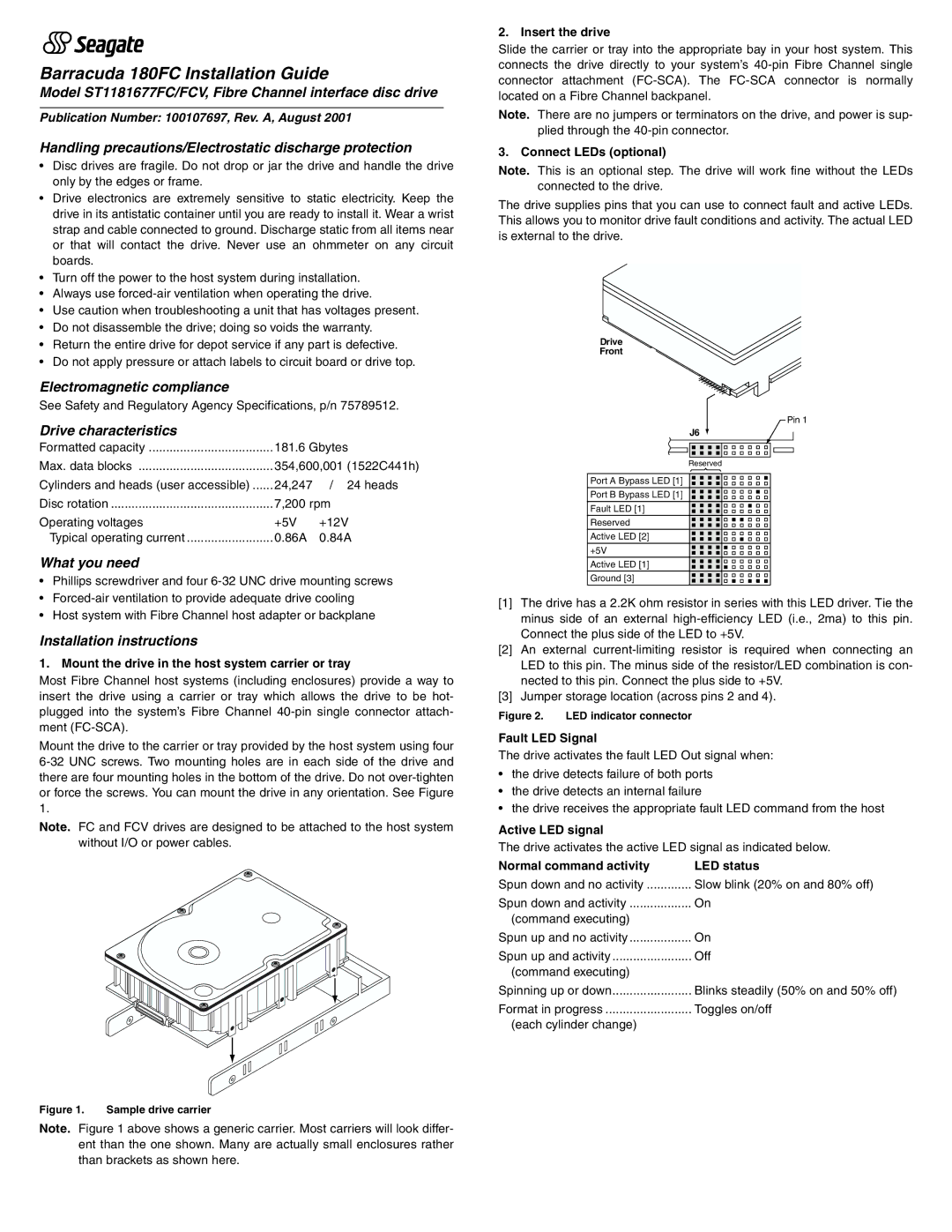ST1181677FC, ST1181677FCV specifications
The Seagate ST1181677FCV and ST1181677FC are part of Seagate's line of high-capacity storage solutions, designed specifically for enterprise environments that require robust performance and reliability. These hard disk drives (HDDs) are notable for their large capacities, advanced technologies, and features that cater to the demanding needs of data centers and enterprise applications.One of the primary features of the ST1181677FCV and ST1181677FC is their impressive storage capacity. With 180GB of space available, these drives provide ample room for critical data, applications, and virtual machines. This large capacity is essential for organizations that rely on data-intensive operations and require scalable storage solutions to accommodate growing data workloads.
Both models utilize Fast Adaptive Read-Write Technology, which enhances performance by optimizing data access times and improving throughput. This technology enables the drives to handle multiple read and write operations efficiently, making them suitable for environments that handle numerous concurrent users and tasks. This is particularly beneficial in transactional systems, databases, and in applications that demand low latency.
In addition to performance, reliability is critical for enterprise storage. The ST1181677FCV and ST1181677FC are designed with advanced error-correction and redundancy features to minimize data loss and ensure data integrity. These drives are equipped with features like rotational vibration (RV) tolerance, which helps maintain performance in multi-drive systems by mitigating the effects of vibration that can occur in densely populated storage environments.
The drives also utilize a Serial Attached SCSI (SAS) interface, which provides a high-speed connection to servers and storage systems, enabling faster data transfer rates compared to traditional ATA interfaces. This makes them ideal for enterprise-level applications where speed and efficiency are paramount.
Another notable characteristic of the ST1181677FCV and ST1181677FC is their commitment to energy efficiency. These drives are designed to consume less power, which not only reduces operational costs but also contributes to a lower carbon footprint for organizations seeking to improve their sustainability practices.
In summary, the Seagate ST1181677FCV and ST1181677FC represent a powerful combination of high capacity, advanced technologies, and robust reliability. With features designed to meet the demands of enterprise environments, these HDDs are a solid choice for organizations looking to implement scalable storage solutions without compromising performance.

